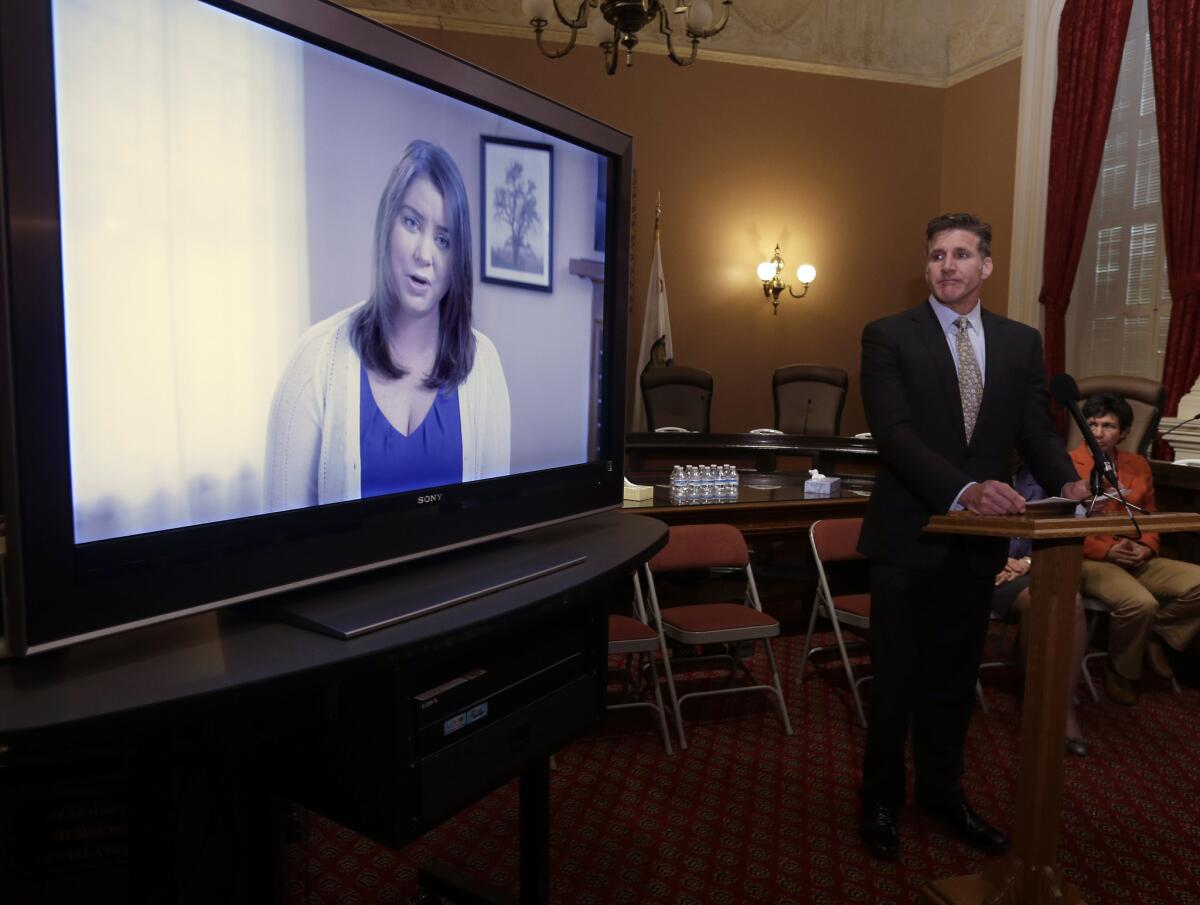Referendum papers filed on assisted suicide law

Dan Diaz, the husband of Brittany Maynard, watches a video of his wife, recorded 19 days before her assisted suicide death in Oregon. Her pleas led to approval of a law allowing doctors to prescribe lethal doses of drugs to terminally ill patients in California.
- Share via
Reporting from Sacramento — A day after Gov. Jerry Brown signed a bill allowing assisted suicides for the terminally ill in California, opponents filed papers to seek a referendum to overturn the measure on the November 2016 ballot.
A group called Seniors Against Suicide filed papers with the state attorney general’s office to get an official title and summary for the referendum, the first step toward collecting signatures.
The group would have 90 days, or until Jan. 3, to collect the signatures of 365,880 registered voters, a difficult task as those behind a failed referendum on the state’s new vaccine law recently found out.
“Illness is never a reason for ending a life,” said the letter from clinical psychologist Mark Hoffman to the attorney general. He said in the letter he is “working with other opponents of medically killing depressed and ill patients.”
The measure was also opposed by a group called Californians Against Assisted Suicide, which is made up of doctors, disability activists and religious groups, and has said it is considering a referendum among other options.
That group is not involved in the referendum filed Tuesday, according to its spokesman, Tim Rosales. “We learned about it this afternoon and are studying a number of alternatives,” he said.
The new law, which is likely to take effect next year, would allow physicians in California to prescribe lethal doses of drugs to terminally ill patients with less than six months to live.
More to Read
Sign up for Essential California
The most important California stories and recommendations in your inbox every morning.
You may occasionally receive promotional content from the Los Angeles Times.











